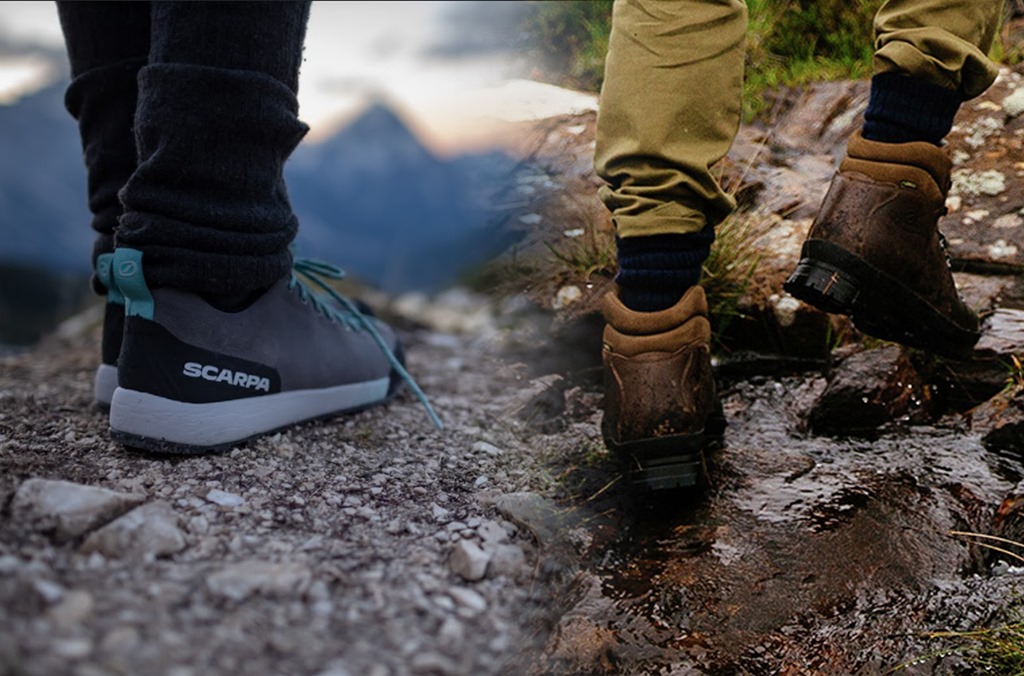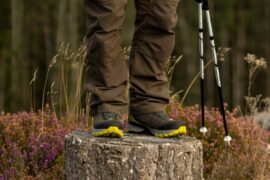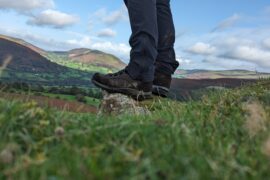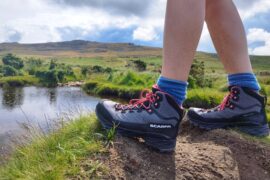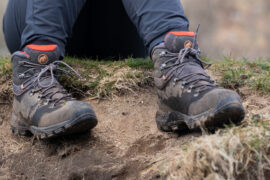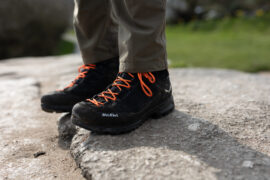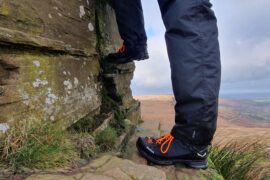Take a look as we chat all about the pros, cons, and correct uses of each.
…
Depending on who you are and what you’re doing, it can be a tricky thing to decide on the correct footwear for the job. You could be facing all sorts of different terrain and conditions. Choosing the correct footwear for you can be the difference between a great time outdoors or a miserable day with sore, aching, or soggy feet. Today we’re going to be talking all about the differences between shoes and boots as well as discussing why some people will always choose one over the other.
Despite our years of experience in this field, we can only advise what may be right for you. It is important to have an understanding of the kind of walking you take on as well as think carefully about your feet and ankles and what they require. We know that every person and foot is different so if you’re not quite sure, we very much recommend visiting one of our stores in Taunton, Bristol, or Exeter and taking advantage of our award-winning, free footwear fitting service.
Now without further ado…
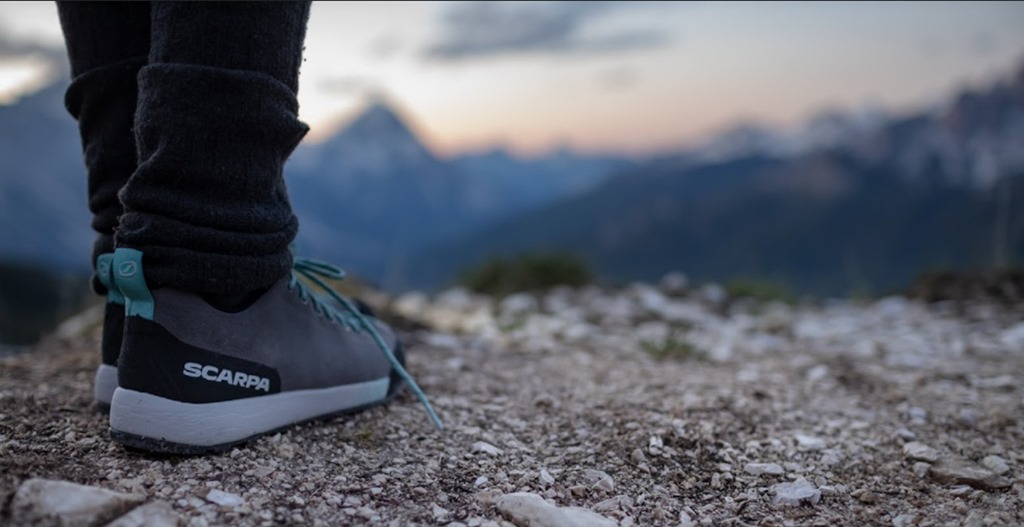
Walking shoes
Walking shoes can be a delightfully comfortable and lightweight option for day walks over flat to medium tricky terrain. The more nimble of you will certainly appreciate the control offered by a decent walking shoe, without a hold on the ankle you are free to move optimally in tricky situations. Though a boot offers a lot more support than a shoe around the ankle, some find this restrictive and difficult over tight, awkward surfaces such as loose scree and rocky, slippery paths.
A shoe is marginally more breathable than a boot as the hot air generated by your foot has less far to travel in order to get out, this makes a fair bit more difference when both pieces of footwear are waterproof lined.
Some shoes in our range such as the awesome Scarpa Vortex GTX is built not only around a proper last but also has a fantastic construction similar in toughness to many of boot range, also featuring a Gore-Tex membrane as well as superbly rugged outer materials, this is a tough shoe certainly worth trying on.
To conclude, if you’re doing more casual, lightweight walking where ankle support is not a priority, you simply cannot go wrong with a decent pair of walking shoes. Our range features plenty of waterproof and nonwaterproof options. For the hotter months of the year, you may also want to consider a walking sandal for unbeatable breathability.
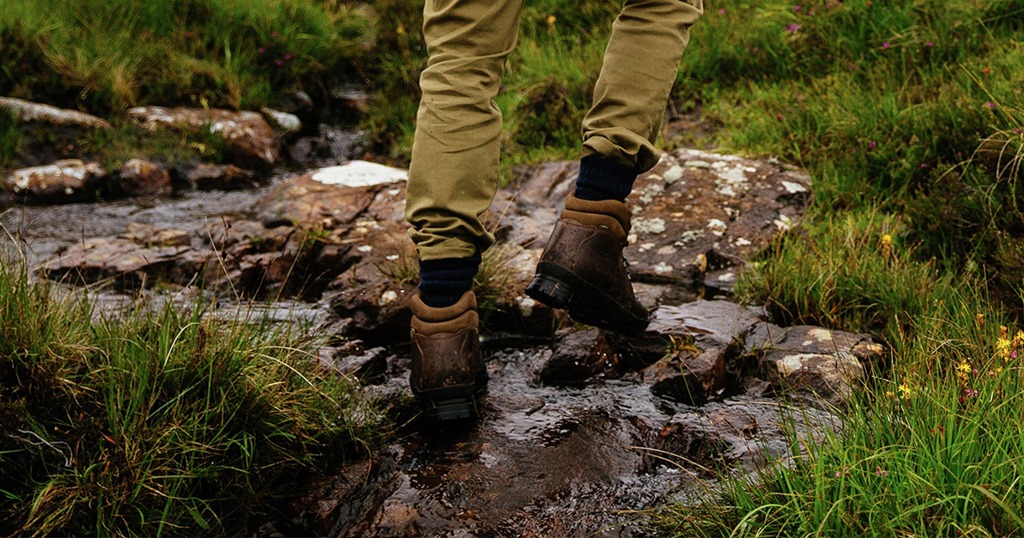
Walking boots
If ankle support is required on your journey, that is where a good walking boot comes in. When it comes to trickier terrain for any amount of time be it a simple day-walk, a week-long trek, or even months of travel, you are in definite need of a boot to prevent ankle fatigue, offer more protection around the foot, offer more warmth in the colder months and keep your feet dryer in wet conditions. A boots height obviously requires a water level to be higher in order to get into your waterproof lined boots, this way you can cross slightly deeper streams as well as longer grass. When used with waterproof trousers, the boots’ higher ankle will tuck in neatly not allowing water to drip into your feet whereas a shoe with a low ankle may.
The higher ankle when tied properly wraps around the ankle preventing too much movement, this can help prevent you from flexing too much perhaps risking hurting yourself (not at all what you want when far out in nature). This hold on your ankle movement also prevents fatigue throughout the day, a long day’s walk can potentially be far more comfortable in the right boot.
If you’re looking to prioritise durability and protection, you cannot go wrong with a full-grain or nubuck leather boot with a Gore-Tex waterproof lining. With proper care, there are leather boots within our range that will last for many years of joyous adventure.
If however, you want to prioritise lightweight breathability while having good protection from the wet, there are many lighter-weight options to look out for. Some of these options such as the Respond Mid GTX from Meindl are essentially sharing in the same construction as a lightweight, protective walking shoe which has the addition of added ankle support.
To conclude, if you’re doing more intensive, longer-distance walking over challenging terrain, then we would certainly recommend a decent pair of walking boots.

